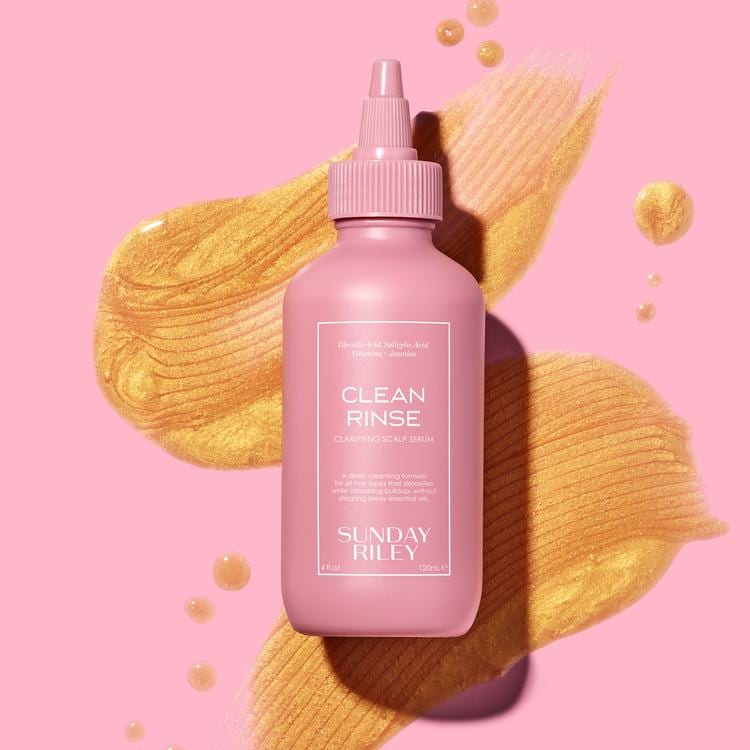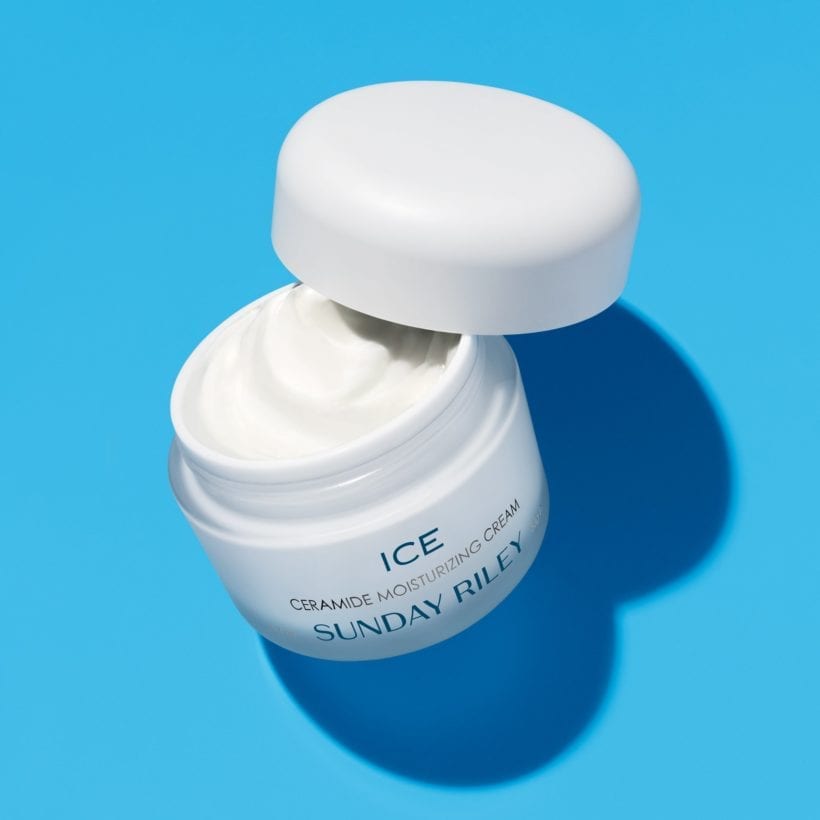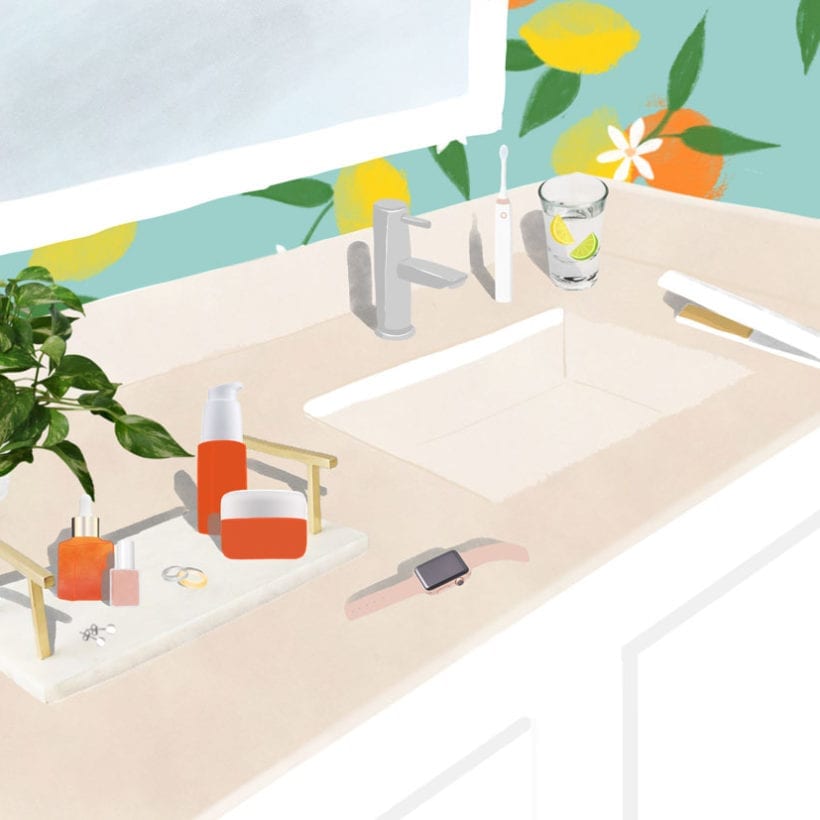When it comes to acids and peels, you might conjure up a frightening image of the scene in “Sex and the City” where Samantha gets an averse, red-faced reaction from her chemical peel just days before Carrie’s book launch party. But, when used correctly, your skin will not actually peel off with a peel. The hero of these acids is glycolic: an exfoliating staple that can be found in many beauty products, from cleansers to masks and moisturizers. Glycolic acid exfoliants are gentle for most skin types, and they are considered safer and less abrasive than scrubs (which can cause tiny lacerations on your skin when used carelessly or too often).
‘With the introduction of a glycolic version of Good Genes, we harness the power of alpha hydroxy acids (AHAs) to deliver a gentle yet effective daily exfoliation. AHAs, like glycolic acid, are essential for removing dead skin cells and revealing a brighter, smoother complexion. What sets Good Genes apart is its unique combination of hydrating and balancing ingredients that not only exfoliate but also nourish the skin. This ensures a radiant, even-toned glow without compromising moisture levels, making it the ideal daily treatment for achieving luminous skin,’ explains Sunday Riley, CEO, founder and product formulator.
Ready to reach glowy, soft skin nirvana? We tapped skincare experts to explain the ins and outs of incorporating a glycolic acid exfoliator into your routine. Of course, it is always a good idea to check in with your dermatologist whether or not a new routine is right for you, but we have a feeling after brushing up on our handy guide, you will not need much convincing that glycolic is the ingredient your regimen is missing.
AHA
Alpha Hydroxy Acid (AHA) is a group of naturally-derived and synthetic acids that gently exfoliate the top layers of the skin revealing a brighter, more even complexion.
AHA can be used by anyone looking to reduce the appearance of fine lines while smoothing and evening skin. It also brightens the appearance of dull-looking skin.
Use products containing AHA after cleansing and toning and before moisturizing. When you first start with AHA use it every other day, then gradually increase usage to once daily. Check in with your derm when using AHA and retinol together.
Good Genes Glycolic Acid Treatment, Good Genes Lactic Acid Treatment, Clean Rinse Clarifying Scalp Serum
What is glycolic acid?
Glycolic acid is an alpha hydroxy acid (or AHA) that is used as a chemical exfoliant, explains Dendy Engelman, M.D., F.A.A.D., a board-certified dermatologist at Medical Dermatology and Cosmetic Surgery in New York. “Derived from sugarcane, it’s the smallest acid in size, meaning the molecule can get deep into the skin,” she notes. ‘This deep penetration allows the glycolic acid to unglue the dead skin cells from one another in the layers underneath the stratum corneum (the outermost skin layer). This makes glycolic acid a very effective ingredient for exfoliation,’ explains Sunday Riley.
Basically, glycolic acid helps break down the skin cells and removes dead particles while addressing skin concerns like pigment unevenness and fine lines. ‘Glycolic acid also stimulates cell turnover and generation. This process of removing dead skin and replacing it with new, fresh cells helps the skin look brighter and healthier,’ adds Riley.
Glycolic acid has also been known to help the skin with the production of elastin and collagen. This allows the skin to heal faster, feel firmer, and be better protected against environmental pollution and damage.
What is glycolic acid used for?
“It is often used to even out pigment and skin tone, blur fine lines, and combat aging. By exfoliating and stimulating collagen production, it helps to address these concerns on your face and sun-exposed areas. It is also helpful for follicular disorders, like keratosis pilaris or ‘chicken skin’ on the arms and legs,” says board-certified dermatologist Michele Farber, M.D., F.A.A.D., of Schweiger Dermatology Group in New York. “It’s safe to use on other areas in addition to your face, like the back, chest, neck, and arms,” adds Engelman.
“Don’t forget your scalp. The scalp is an extension of the face, sharing similar needs for care and attention. Thinking about this, I formulate my products with a holistic approach that treats the scalp with the same importance as facial skin. Overwashing your hair can strip your hair of too much oil and dry out your scalp, resulting in flakiness and itchiness. This philosophy is exemplified in the Clean Rinse scalp product, designed to cleanse and nourish the scalp, promoting overall hair health. By addressing common scalp issues such as buildup, dryness, and irritation, Clean Rinse ensures that the foundation for healthy hair is well-maintained, and glycolic acid plays a very important role in it,” adds Sunday.
Should I use glycolic acid?
Generally, glycolic acid is great for all skin types (and safe to use during pregnancy), but “those with dry or mature skin will benefit the most because of the acid’s ability to penetrate deep into the skin to even out your tone and smooth out fine lines,” says Engelman.
While a glycolic acid exfoliator is much gentler on your skin than a scrub, if you are trying to treat acne or you have super sensitive skin, just make sure it is mixed properly with your other skincare products.
HOW TO USE WITH RETINOLS:
After cleansing, apply 1-2 pumps of Good Genes Glycolic Acid Treatment to dry skin, day or night, as a leave-on treatment. For those with sensitive skin, use Good Genes Glycolic Acid Treatment as a mask. Apply 1-2 pumps to clean, dry skin and leave on for 15 minutes. Rinse well and pat dry.
Luna Sleeping Night Oil: After cleansing, apply 3-4 drops at night to dry skin. Luna Sleeping Night Oil goes from blue to clear when massaged into the skin. Follow with 1-2 pumps of Good Genes Glycolic Acid Treatment.
Alternatively, you can use Good Genes Glycolic Acid Treatment in the morning and Luna Sleeping Night Oil at night, or on alternate evenings to clear away dead skin and increase radiance — and do not forget to apply SPF.
What other ingredients should you be mindful of when layering other products?
“Glycolic acid plays well with other AHAs and BHAs (beta hydroxy acids like salicylic). It can also be paired with ceramides or hyaluronic acid for hydration,” says Farber. Good Genes can be used daily. Good Genes Glycolic penetrates the surface of the skin with tiny glycolic acid molecules, sinking deeper into the skin than other forms of AHA, to break apart pore-clogging debris and repair the look of sun-damaged, congested, wrinkled, or dull skin. With just one use, instant radiance and skin clarity are visibly boosted. Balanced with fermented prickly pear extract, perfect for sensitive skin, to soothe and calm the complexion, along with skin-purifying lemongrass extract,’ explains Sunday.
Speaking of BHAs, what’s the main difference?
“AHAs are water-soluble while BHAs are oil-soluble. While AHAs exfoliate the skin’s surface, BHAs are able to act inside the pores. In choosing an exfoliant based on skin type, glycolic acid is better tolerated by dry skin, and salicylic acid is helpful for oily skin,” says Farber.
Are there different strengths of glycolic acid you can consider?
Choosing the right strength of glycolic acid should be personalized to your skin type. “It often varies between five and 20 percent in at-home products. A higher percentage is better for oily skin as it can be more drying, while a lower percentage is better for sensitive skin or if you’re introducing it into your routine for the first time,” says Farber.
How often should you use glycolic acid?
‘Apply to clean skin as an exfoliating serum twice a day, morning and night. I love it once a day. You can use it twice if you want. However you want to fit into your routine, this product will do it for you. When in doubt, start with every other day for two weeks and see how your skin reacts to the product before building up to daily use. Further treatments, serums, and creams are able to sink into the skin better after Good Genes application,’ explains Sunday.
What are the immediate and long-term results?
When using a glycolic acid exfoliant, you will notice softer, smoother skin right away, which is why it continues to be a top pick in skincare products. ‘Glycolic Acid is the smallest AHA, which means that it penetrates deeper into the skin than other AHAs. Because of this, glycolic acid is ideal for deeper surface exfoliation, clearer-looking skin, and the appearance of smaller pores. By dissolving and sweeping away dead skin cells and excess oil, the signs of dull skin and congestion are cleared in just 3 minutes. The look of wrinkles and fine lines are visibly smoothed,’ shares Sunday. ‘If you want the clinical benefits of using a glycolic acid serum, which usually comes from daily use, that’s how I use it every single day for 15 years. You’re going to see improvement no matter how you use it. And it’s something that if I put it on at night, I wake up the next day and I see instant improvement. If I put it on in the morning, I see it within minutes. This is one of those magic wand products we have in the line.’
For best results, use glycolic consistently for four to six months to stimulate collagen production (resulting in healthier, bouncier skin) and minimize fine lines.
What’s the most common mistake when using a glycolic acid exfoliant?
Many people wonder how to use glycolic acid. While it is easy to get addicted to glycolic acid’s immediate, glow-inducing powers, but “when you’re treating your skin, it’s crucial to protect it with sunblock every day,” says Sunday Riley. “Our glycolic version of Good Genes is a gentle, daily exfoliant designed to minimize sensitivity. Even though it’s formulated to be kind to your skin, sunscreen is essential to shield your renewed skin from UV damage. Consistent protection ensures you get the most out of your skincare routine while maintaining a healthy, radiant complexion.”
What can you expect it to feel like when you use it?
“Your skin will feel tingly when you first use glycolic acid. It can cause mild redness and irritation on initial use as it is able to reach a deeper layer of the skin relatively quickly because of its molecular size. When you feel that gentle tingle, that’s Good Genes at work! The glycolic acid is doing its job like tiny, gentle scrubbing bubbles, getting rid of dead skin cells and revealing a brighter, smoother complexion. That tingle means the formula is effectively exfoliating and renewing your skin, ensuring you get the best results with every use,” says Riley.










